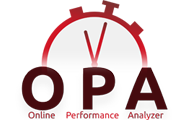Imagine if your employees became your brand’s biggest promoters. Not through forced campaigns or scripted posts, but by genuinely sharing their enthusiasm for your company online. That’s exactly what employee advocacy programs do—they transform your team into powerful brand ambassadors. In a world where people trust people more than polished corporate ads, these programs can skyrocket your reach, credibility, and influence.
If you’ve ever wondered how to harness the voices of your employees to amplify your brand, you’re in the right place. Let’s dive into how employee advocacy works, why it’s a game-changer, and how you can create a program that boosts both employee engagement and brand awareness.
What is Employee Advocacy?
Employee advocacy is the promotion of a brand by its employees, especially through digital channels like LinkedIn, Twitter, or Instagram. Instead of relying solely on marketing teams, companies encourage staff members to share company updates, industry news, or even their personal experiences at work.
Think of it as word-of-mouth marketing—only now it happens online and at scale. When your employees talk about your company, people listen because it feels authentic and trustworthy.
Why Employee Advocacy Matters for Your Brand
Consumers today are skeptical of traditional advertising. They crave authenticity. According to research, content shared by employees receives up to 8x more engagement than content shared by brand channels.
When your team shares their perspectives, achievements, or behind-the-scenes moments, it humanizes your brand. It signals transparency and builds trust with your audience. Plus, employee posts can reach networks you’d never access through paid ads alone.
Key Benefits of Employee Advocacy Programs
Increased Brand Reach
Every employee has their own network of connections. Multiply that by dozens—or even thousands—of employees, and your message spreads like wildfire.
Enhanced Credibility and Trust
People trust real people more than company logos. Advocacy adds authenticity to your marketing and positions your brand as approachable and genuine.
Improved Employee Engagement
Advocacy isn’t just about branding—it’s about culture. When employees feel proud enough to share company content, it shows they’re engaged and connected to the mission.
Better Recruitment and Talent Attraction
Potential employees often check company culture before applying. Advocacy content gives them a glimpse of what it’s like to work at your organization, making recruitment easier.
Cost-Effective Marketing
Compared to paid campaigns, employee advocacy delivers higher ROI at a fraction of the cost.
How to Build a Successful Employee Advocacy Program
Set Clear Goals
Do you want to increase brand visibility, improve recruitment, or drive website traffic? Your goals will shape your program’s strategy.
Choose the Right Platform and Tools
Use advocacy platforms like Sharp, Everyone Social, or Post Beyond to make content sharing seamless and trackable.
Provide Training and Guidelines
Not all employees are social media experts. Offer training sessions and easy-to-follow guidelines so they know what’s appropriate to share.
Create Shareable Content
Employees are more likely to post content that feels engaging, helpful, and aligned with their personal brand. Focus on value-driven content, not just promotional material.
Recognize and Reward Participation
Celebrate your top advocates with shout-outs, incentives, or even career development opportunities. Recognition fuels motivation.
Common Challenges and How to Overcome Them
Lack of Employee Motivation
Solution: Highlight the personal benefits, such as building their own professional brand and expanding their network.
Concerns About Oversharing or Missteps
Solution: Provide clear social media guidelines and examples of good posts.
Content Fatigue
Solution: Diversify the type of content available—mix company updates with industry insights, thought leadership, and employee stories.
Measuring ROI
Solution: Use analytics tools to track clicks, engagement, and conversions directly tied to advocacy efforts.
Measuring the Impact of Employee Advocacy
Tracking success is crucial. Here’s what you should measure:
-
Engagement metrics: likes, comments, and shares.
-
Website traffic from advocacy links.
-
Number of new leads generated.
-
Social media reach and impressions.
-
Recruitment metrics (applications and hires).
By monitoring these KPIs, you’ll know whether your program is delivering the expected results—or where adjustments are needed.
Best Practices to Maximize Results
-
Keep content short, engaging, and easy to share.
-
Encourage employees to add personal captions for authenticity.
-
Lead by example—get executives involved in advocacy.
-
Celebrate milestones to keep momentum high.
-
Continuously optimize based on feedback and performance data.
Employee advocacy programs are no longer a “nice-to-have”—they’re a must-have if you want to stand out in today’s crowded digital space. By turning your employees into brand champions, you boost credibility, extend your reach, and strengthen your company culture.
Start small, track your progress, and refine your approach over time. With the right strategy, your advocacy program can become one of your most powerful marketing assets.
So, why wait? Begin empowering your employees today, and watch your brand reach new heights tomorrow.
FAQs
1. What is an employee advocacy program?
It’s a structured initiative where employees share company-related content on their personal social networks to promote the brand and increase visibility.
2. Why should companies invest in employee advocacy?
Because it builds trust, expands reach, boosts engagement, and supports recruitment efforts—all at a relatively low cost.
3. How do you encourage employees to participate in advocacy?
Offer training, create engaging content, recognize contributions, and show how it benefits their own personal branding.
4. What tools can help manage employee advocacy programs?
Platforms like Everyone Social, Sharp, Post Beyond, and Sociable make it easy to curate, share, and track advocacy content.
5. How do you measure employee advocacy success?
Track engagement, reach, traffic, lead generation, and employee participation rates using analytics tools.

